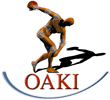Ορθοπαιδικό Αθλητιατρικό Κέντρο Ιωαννίνων
“Ένα σύγχρονο και πλήρως εξοπλισμένο εργαστήριο”
Thigh muscle weakness in ACL-deficient knees persists without structured rehabilitation.
Clin Orthop Relat Res. 2006 Sep;450:211-8.
We evaluated whether quadriceps and hamstrings weakness depended on chronicity in amateur athletes with anterior cruciate ligament deficiencies. We hypothesized that the weakness would not recover to the level of healthy control subjects without structured rehabilitation. Secondarily, we asked whether quadriceps and hamstrings side-to-side percent asymmetry in strength was consistent at different stages of chronicity. Thirty-six male amateur athletes forming equal groups of short, intermediate, and long chronicity (mean, 4, 12, and 56 months, respectively) were tested isokinetically against control subjects at 60 degrees per second. Weakness was substantial in both muscle groups and at all times ranging from 32% to 21% compared with the control subjects. However, side-to-side deficits revealed a linear trend of lessening with time. The quadriceps had greater side-to-side asymmetry that ranged from 23% to 10%, whereas the hamstrings asymmetry ranged from 14% to almost 0%. Acquiring symmetric strength earlier than 1 year after injury only occurred in the hamstrings. It can be inferred that participation in organized rehabilitation would minimize the detrimental effects of anterior cruciate ligament rupture on thigh muscle strength. LEVEL OF EVIDENCE: Prognostic Study, Level II.


